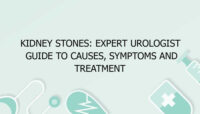Asthma in Children: Symptoms, Causes, and Treatment
Asthma in children is a chronic respiratory condition characterized by inflammation and narrowing of the airways, leading to difficulty in breathing. This condition is common among children and can significantly impact their quality of life if not managed properly. Understanding asthma in children, including its symptoms, causes, and treatment, is crucial for effective management and ensuring that affected children can lead healthy and active lives.
Understanding Asthma in Children
Asthma is a long-term condition that affects the airways in the lungs. In children, asthma manifests as recurrent episodes of wheezing, coughing, shortness of breath, and chest tightness. These symptoms occur due to inflammation and swelling of the airways, which makes them more sensitive to various triggers. The underlying cause of asthma is a combination of genetic and environmental factors that lead to chronic airway inflammation and hyperreactivity.
Symptoms of Asthma in Children
The symptoms of asthma in children can vary in frequency and severity. They often include:
1. Wheezing: Wheezing is a high-pitched whistling sound made during breathing, particularly when exhaling. This sound occurs due to narrowed airways and is a common symptom of asthma.
2. Coughing: Persistent coughing, especially at night or early in the morning, can be a sign of asthma. The cough may be dry or produce mucus and can be worsened by physical activity or exposure to allergens.
3. Shortness of Breath: Children with asthma may experience difficulty breathing or feel short of breath, especially during physical exertion or when exposed to asthma triggers. This can lead to a sense of tightness in the chest.
4. Chest Tightness: A sensation of tightness or pressure in the chest is a common symptom of asthma. This feeling can be uncomfortable and may interfere with the child’s ability to breathe easily.
5. Increased Respiratory Rate: During an asthma attack, a child’s respiratory rate may increase as their body attempts to compensate for the reduced airflow.
6. Difficulty Sleeping: Asthma symptoms can worsen at night, leading to difficulty sleeping. This can result in disrupted sleep patterns and fatigue during the day.
7. Reactivity to Triggers: Asthma symptoms may worsen in response to specific triggers, such as allergens, respiratory infections, changes in weather, or exposure to smoke or strong odors.
Causes of Asthma in Children
Asthma is a multifactorial condition, meaning it is influenced by a combination of genetic and environmental factors. The exact cause of asthma in children is not fully understood, but several factors are known to contribute to its development:
1. Genetic Predisposition: A family history of asthma or other allergic conditions can increase a child’s risk of developing asthma. Genetic factors can affect the immune system and its response to environmental triggers.
2. Allergens: Exposure to allergens such as pollen, dust mites, mold, pet dander, and cockroach droppings can trigger asthma symptoms in susceptible children. Allergic reactions can lead to inflammation and narrowing of the airways.
3. Respiratory Infections: Viral respiratory infections, particularly during early childhood, can contribute to the development of asthma. These infections can damage the airways and increase their sensitivity to asthma triggers.
4. Environmental Factors: Exposure to environmental pollutants, such as tobacco smoke, air pollution, and industrial chemicals, can increase the risk of asthma. These pollutants can irritate the airways and exacerbate asthma symptoms.
5. Physical Activity: While physical activity is generally beneficial for health, in children with asthma, intense exercise or exposure to cold air during exercise can sometimes trigger asthma symptoms or exacerbate existing symptoms.
6. Changes in Weather: Weather changes, such as cold air, high humidity, or sudden temperature changes, can act as asthma triggers. Cold air can cause airway constriction and worsen asthma symptoms.
7. Emotional Stress: Emotional stress and anxiety can trigger or worsen asthma symptoms in some children. Stress can lead to increased airway inflammation and sensitivity.
Diagnosis of Asthma in Children
Diagnosing asthma in children involves a combination of medical history, physical examination, and diagnostic tests. The diagnostic process typically includes:
1. Medical History and Physical Examination: A healthcare provider will start by taking a detailed medical history, including information about the child’s symptoms, family history of asthma or allergies, and exposure to potential triggers. A physical examination will help assess signs of asthma, such as wheezing or difficulty breathing.
2. Spirometry: Spirometry is a common diagnostic test used to measure lung function. It involves having the child blow into a device that measures the volume and speed of air they can exhale. This test helps assess the degree of airway obstruction and reversibility with medication.
3. Peak Flow Measurement: Peak flow measurement involves using a peak flow meter to assess the maximum speed of exhalation. This test helps monitor changes in lung function and detect early signs of worsening asthma.
4. Allergy Testing: Allergy testing may be conducted to identify specific allergens that may trigger asthma symptoms. This can involve skin prick tests or blood tests to assess the child’s sensitivity to various allergens.
5. Exhaled Nitric Oxide Test: This test measures the level of nitric oxide in the breath, which can be elevated in individuals with asthma. It helps assess airway inflammation and monitor treatment response.
6. Bronchoprovocation Testing: In some cases, bronchoprovocation testing may be performed to assess airway reactivity. This test involves exposing the child to a substance that can provoke asthma symptoms, such as methacholine, to evaluate airway response.
Treatment of Asthma in Children
The treatment of asthma in children focuses on managing symptoms, reducing inflammation, and preventing exacerbations. Treatment strategies may include:
1. Medications
Inhaled Corticosteroids: Inhaled corticosteroids are the most commonly prescribed medications for managing chronic asthma in children. They work by reducing inflammation in the airways and preventing symptoms. These medications are usually taken daily to maintain control of asthma.
Bronchodilators: Bronchodilators are medications that help relax the muscles around the airways, making it easier to breathe. They are often used as rescue medications to provide quick relief during an asthma attack or when symptoms worsen.
Leukotriene Modifiers: Leukotriene modifiers are oral medications that help reduce inflammation and prevent asthma symptoms by blocking the action of leukotrienes, which are inflammatory chemicals in the body.
Combination Inhalers: Combination inhalers contain both inhaled corticosteroids and long-acting bronchodilators. They are used to provide both anti-inflammatory and bronchodilator effects and are typically used in children with moderate to severe asthma.
2. Asthma Action Plan
An asthma action plan is a written plan developed by a healthcare provider that outlines the child’s asthma management strategies. It includes information on daily medications, how to monitor symptoms, and steps to take during an asthma attack. The plan helps parents and caregivers respond effectively to asthma symptoms and adjust treatment as needed.
3. Avoiding Triggers
Identifying and avoiding asthma triggers is an important part of asthma management. Common triggers include allergens, respiratory infections, smoke, and environmental pollutants. Strategies to minimize exposure to triggers may include:
- Reducing exposure to allergens: Implementing measures to reduce exposure to dust mites, pet dander, and mold can help manage asthma. This may involve using allergen-proof bedding, keeping pets out of certain areas, and controlling indoor humidity.
- Avoiding smoke: Ensuring a smoke-free environment is crucial for asthma management. This includes avoiding tobacco smoke and other sources of smoke, such as burning candles or incense.
- Managing respiratory infections: Preventing and managing respiratory infections, such as colds and flu, can help reduce asthma exacerbations. Vaccinations and good hygiene practices are important for preventing infections.
4. Lifestyle Modifications
Making certain lifestyle modifications can help improve asthma control and overall health. These may include:
- Regular physical activity: Engaging in regular physical activity can improve lung function and overall fitness. However, children with asthma should follow their healthcare provider’s recommendations regarding exercise and use appropriate medications if needed.
- Healthy diet: A balanced diet that includes a variety of fruits, vegetables, and whole grains can support overall health and potentially reduce inflammation. Some studies suggest that omega-3 fatty acids and antioxidants may have a positive effect on asthma control.
- Stress management: Managing stress and promoting emotional well-being can help reduce the impact of asthma symptoms. Techniques such as relaxation exercises, mindfulness, and counseling may be beneficial.
5. Monitoring and Follow-Up
Regular monitoring and follow-up with a healthcare provider are essential for effective asthma management. This involves:
- Routine check-ups: Regular visits to the healthcare provider help assess asthma control, adjust medications as needed, and address any concerns or questions.
- Monitoring symptoms: Keeping track of asthma symptoms, medication use, and peak flow measurements can help identify patterns and manage asthma effectively.
- Adjusting treatment: Treatment plans may need to be adjusted based on changes in symptoms, response to medications, or new triggers. Ongoing communication with the healthcare provider is important for maintaining optimal asthma control.
FAQs
What is asthma in children and how is it different from asthma in adults?
Asthma in children is a chronic condition characterized by inflammation and narrowing of the airways, leading to difficulty breathing. While asthma affects both children and adults, there are differences in how it presents and is managed. In children, asthma may be triggered by specific allergens or respiratory infections and can significantly impact growth and development. Children may also have difficulty recognizing and communicating their symptoms. In contrast, adult asthma often has a more established pattern, and management may focus more on long-term control and prevention of exacerbations. Early diagnosis and tailored treatment are essential for managing asthma effectively in both children and adults.
What are the common symptoms of asthma in children?
Common symptoms of asthma in children include wheezing (a high-p
itched whistling sound during breathing), persistent coughing (especially at night or early in the morning), shortness of breath, chest tightness, increased respiratory rate, and difficulty sleeping due to asthma symptoms. These symptoms may vary in frequency and severity and can be triggered or worsened by exposure to allergens, respiratory infections, or physical activity. Recognizing these symptoms early and seeking medical evaluation is crucial for effective management and improving the child’s quality of life.
What causes asthma in children?
Asthma in children is caused by a combination of genetic and environmental factors. Genetic predisposition plays a role, with a family history of asthma or allergies increasing the risk. Environmental factors such as exposure to allergens (e.g., pollen, dust mites, pet dander), respiratory infections, environmental pollutants, and physical activity can contribute to the development and exacerbation of asthma. Changes in weather and emotional stress can also act as triggers. Understanding these factors helps in managing asthma and preventing symptom flare-ups.
How is asthma in children diagnosed?
Diagnosing asthma in children involves a comprehensive approach that includes medical history, physical examination, and diagnostic tests. The healthcare provider will assess the child’s symptoms, family history, and potential exposure to asthma triggers. Diagnostic tests such as spirometry (to measure lung function), peak flow measurement (to assess exhalation speed), allergy testing (to identify specific allergens), and exhaled nitric oxide testing (to measure airway inflammation) may be performed. A thorough evaluation helps confirm the diagnosis of asthma and determine the most appropriate treatment plan.
What are the treatment options for asthma in children?
Treatment options for asthma in children aim to manage symptoms, reduce inflammation, and prevent exacerbations. Medications commonly used include inhaled corticosteroids (to reduce airway inflammation), bronchodilators (to relax airway muscles and provide quick relief), and leukotriene modifiers (to prevent asthma symptoms). Combination inhalers that include both corticosteroids and long-acting bronchodilators may be prescribed for more severe asthma. An asthma action plan, which outlines daily management strategies and steps to take during an asthma attack, is essential. Identifying and avoiding triggers, making lifestyle modifications, and regular monitoring are also important components of asthma management.
How can parents help manage their child’s asthma?
Parents can play a crucial role in managing their child’s asthma by following the treatment plan prescribed by the healthcare provider and ensuring that medications are taken as directed. They should help identify and avoid asthma triggers, such as allergens and smoke, and make necessary lifestyle modifications, such as promoting a healthy diet and regular physical activity. Monitoring symptoms and peak flow measurements, keeping track of medication use, and attending regular check-ups are essential for effective management. Educating themselves about asthma and its management, as well as supporting their child in understanding and coping with the condition, can also make a significant difference.
Are there any long-term effects of asthma in children?
If managed properly, most children with asthma can lead healthy, active lives without significant long-term effects. However, uncontrolled or severe asthma may lead to complications such as stunted growth, frequent respiratory infections, or impaired lung function. Long-term effects can also include increased risk of developing other respiratory conditions or reduced quality of life due to persistent symptoms. Regular monitoring, effective treatment, and adherence to an asthma action plan are crucial for minimizing the risk of long-term effects and ensuring optimal asthma control.
Can asthma be cured in children?
Currently, there is no cure for asthma, but it can be effectively managed with proper treatment and lifestyle adjustments. The goal of asthma management is to control symptoms, prevent exacerbations, and improve the child’s quality of life. With appropriate medications, identification of triggers, and regular monitoring, most children with asthma can experience significant symptom relief and lead active, healthy lives. Ongoing research aims to improve our understanding of asthma and develop new treatments, but for now, the focus remains on managing and controlling the condition.
How can exercise impact asthma in children?
Exercise is generally beneficial for children with asthma and can improve overall lung function and fitness. However, intense physical activity or exercise in cold, dry air can sometimes trigger asthma symptoms or exacerbate existing symptoms. It is important for children with asthma to follow their healthcare provider’s recommendations regarding exercise and use appropriate medications, such as bronchodilators, if needed. With proper management and precautions, most children with asthma can participate in physical activities and sports without significant issues. Regular exercise can also help strengthen respiratory muscles and improve overall health.
What role does diet play in managing asthma in children?
A balanced diet plays a supportive role in managing asthma in children. While no specific diet can cure asthma, a healthy diet that includes a variety of fruits, vegetables, whole grains, and lean proteins can support overall health and potentially reduce inflammation. Some studies suggest that omega-3 fatty acids (found in fish) and antioxidants (found in fruits and vegetables) may have a positive effect on asthma control. It is important to avoid foods that may trigger allergies or sensitivities in children with asthma. Consulting a healthcare provider or dietitian can help ensure that dietary choices support asthma management and overall well-being.
In conclusion, asthma in children is a complex condition that requires careful management to ensure that affected children can lead healthy and active lives. Understanding the symptoms, causes, and treatment options for asthma in children is essential for effective management and improving quality of life. With appropriate treatment, lifestyle modifications, and regular monitoring, most children with asthma can achieve good control of their symptoms and participate fully in everyday activities.


